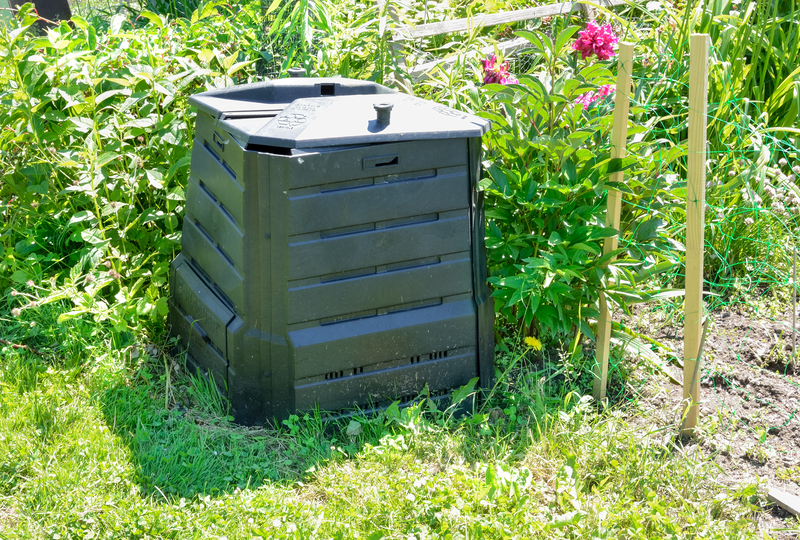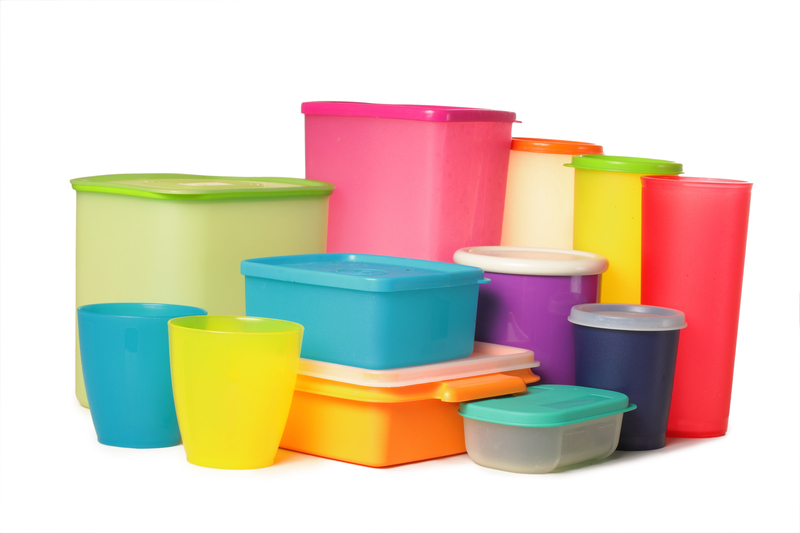Unlocking Creative Recycling Options for Pots and Pans
Are you staring at a collection of old pots and pans that are just taking up space in your kitchen cabinet? Most people encounter worn-out cookware at some point, and it's tempting to toss it in the trash. However, there's an array of eco-savvy alternatives you can explore. In this comprehensive guide, we'll delve into unique recycling options for pots and pans--from upcycling projects and community programs to responsible disposal and up-to-date environmental considerations.
Why Recycle Pots and Pans?
Many pots and pans recycling methods go well beyond simply preventing clutter. Cookware is usually constructed from valuable materials like aluminum, stainless steel, or copper. Recycling these metals prevents unnecessary mining, saves energy, and protects the environment from additional waste. It's also a chance to inspire creativity while supporting a sustainable lifestyle.
- Reduce environmental impact: Metals used in cookware can take hundreds of years to decompose in landfills.
- Support local communities: Donated or repurposed pots and pans can benefit shelters, charities, or small businesses.
- Unlock creativity: Upcycling projects allow you to give your old cookware new life in decorative or practical ways.

Understanding the Composition of Pots and Pans
Before recycling or upcycling, it's essential to recognize the materials your pots and pans are made from. The most common kinds include:
- Aluminum - Lightweight and often used for its excellent conduction properties.
- Stainless Steel - Durable, rust-resistant, and common in premium cookware lines.
- Copper - Known for superior heat conduction and a unique aesthetic.
- Cast Iron - Heavy, sturdy, and beloved for even heating and longevity.
- Teflon-Coated (Nonstick) - Convenient but trickier to recycle due to chemical coatings.
*Tip: Check for any plastic, rubber, or wooden parts (such as handles and lids) as these may need to be separated for efficient recycling or upcycling.*
Top Creative Recycling Options for Cookware
1. Local Scrap Metal Recycling
Most metal pots and pans can be dropped off at your local scrap metal recycling center. These facilities have specialized processes for melting down various metals, allowing their reuse in construction, manufacturing, or even new cookware!
- How to prepare: Remove all non-metal parts (handles, knobs, lids).
- Contact ahead: Call your center first, especially if your cookware has nonstick coatings.
- Separate metals: Group aluminum, steel, copper, or cast iron to help recycling staff.
2. Municipal Recycling Programs
Some city or municipal recycling programs accept small metal items like old cookware. Check your municipality's guidelines; some require you to place recyclable pots and pans in a separate bin, while others only accept certain metals.
3. Donate to Charity or Secondhand Stores
If your pots and pans are still functional, consider donating them to local charities, shelters, or thrift stores. Organizations serving the homeless or low-income families are often grateful for gently used cookware.
- Ensure cleanliness: Give pots and pans a thorough cleaning before donation.
- Check condition: Avoid donating warped, peeling, or unsafe nonstick cookware.
4. Upcycle and Repurpose at Home
If you have a creative streak, upcycling pots and pans is both fun and eco-friendly. Here are some innovative ideas:
- Planters: Drill a few drainage holes and use old pots as quirky plant containers--perfect for herbs or flowers on a balcony or patio.
- Garden Decor: Paint and stack pans for whimsical garden sculptures or birdbaths.
- Wall Art: Old cookware can be mounted on walls in rustic kitchens or turned into clocks and photo frames.
- Organizers: Use shallower pans for holding tools, art supplies, or even as serving trays at your next party.
- Cooking Class Props: If the cookware isn't food-safe, offer it to local schools or culinary programs for demonstrations.
5. Creative Community Projects
Get your neighbors, friends, or local artists involved. Many communities host upcycling workshops, where old pots and pans become musical instruments, mosaic pieces, or even public art installations. By pooling resources, you inspire a collective sense of eco-consciousness.
6. Return to Manufacturer Programs
A growing number of brands offer take-back or "product stewardship" programs for their cookware. Some companies recycle their own products or even upcycle them into new collections.
- Check your manufacturer's website for disposal or recycling options.
- Reach out via email or customer support to learn about mail-back or local drop-off solutions.
Special Considerations for Nonstick and Coated Cookware
Nonstick pans--especially those with Teflon (PTFE) or ceramic coatings--require extra care. The chemical coatings are not suitable for many standard recycling methods. Here's how to handle them responsibly:
- Never incinerate: Burning nonstick coatings can release harmful toxins.
- Check with manufacturers: Some offer special recycling or take-back programs.
- Municipal drop-offs: Certain recycling centers are equipped to process nonstick pans safely.
What If Your Pots and Pans Can't Be Recycled?
If your cookware is beyond salvaging or acceptance by recyclers, consider these last-resort yet still responsible options:
- Artistic projects: Offer pans to local artists or craft groups for use in sculptures or upcycled installations.
- Metal sculpting: Makerspaces can sometimes use old pots for welding and fabrication classes.
- Yard sales or swaps: Even heavily used pots may find a home for camping, gardening, or workshop purposes.
Frequently Asked Questions on Recycling Cookware
Can I put old pots and pans in my curbside recycling bin?
Usually, curbside recycling programs do not accept large metal objects like pots and pans, but check with your municipality for specific rules. It's generally better to take them directly to a scrapyard or metal recycling facility.
Is it safe to use recycled cookware?
Recycled metals are commonly used in manufacturing new cookware and other products. Reputable brands take care to smelt and process recycled metal to food-safe standards.
Can damaged nonstick pans be recycled?
It depends--nonstick coatings such as Teflon require special handling. Most municipal facilities do not recycle coated pans. Contact the manufacturer or a specialized recycling center for guidance.
How can I remove plastic or wooden handles before recycling?
Use a screwdriver to detach screws or bolts that connect handles to the pan. For riveted handles, a drill or metal file may be necessary. Be sure to keep safety in mind and consult tutorials if needed.
Environmental Benefits of Cookware Recycling and Upcycling
Recycling pots and pans prevents landfill waste and reduces the environmental toll of mining and manufacturing new metals. Every time you recycle or repurpose cookware:
- Energy savings: Recycling aluminum, for example, uses up to 95% less energy compared to producing new metal from ore.
- Resource conservation: By reusing metals already in circulation, fewer raw materials are required.
- Lower greenhouse gas emissions: Less energy means fewer emissions--helping combat climate change.
- Community enrichment: Donated cookware supports people in need, while upcycled projects enrich local culture and creativity.
Eco-Friendly Disposal Tips
You can maximize the sustainability of every step:
- Plan ahead: Collect a batch of old cookware before making a trip to the recycling center to save fuel and time.
- Educate others: Share your knowledge on recycling pots and pans with friends, family, and community groups. You may inspire others to adopt greener habits!
- Support brands with recycling policies: When buying new cookware, choose companies that encourage recycling or upcycling of their products.
- Document your projects: Post photos of your upcycled creations on social media to motivate others to think twice before discarding their old pots and pans.

Conclusion: Give Your Cookware a New Lease on Life
With so many creative recycling options for pots and pans, there's truly no reason for old cookware to go to waste. Whether you're dropping pans off at a scrap metal center, donating to a deserving home, or transforming a battered saucepan into a show-stopping garden planter, you're joining a movement that values resourcefulness, sustainability, and artistic expression.
Unlock the potential of your kitchen castoffs and make a difference for the planet--one pan at a time!
Ready to Recycle? Your Next Steps
- Audit your kitchen for old or unused cookware.
- Determine the material and condition of each item.
- Choose from the many pot and pan recycling options--scrapyards, donation, upcycling, or community projects.
- Take action and spread the word: encourage your network to join the movement for greener kitchens and a more sustainable future!
For more tips on sustainable living and eco-friendly kitchen practices, keep exploring our site and let us know your favorite upcycling project!
